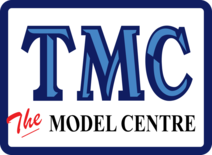981001 Rapido Trains OO Gauge Leeds Forge Chemical Wagon - NSFF Chilwell No.101
Details
OO Gauge Ammonium Nitrate/ Chemical Tank Wagon.
The Great War brought about the industrialisation of warfare and, alongside it, technological developments such as aeroplanes and tanks.
At this time, there was also an enormous change in the manufacture of munitions; In the UK, this was brought about by the Ministry of Munitions. From 1915, they took charge of the entire process of manufacturing armaments, which included the acquisition of the raw materials right through to the production of the finished shells.
One of the Ministry’s greatest accomplishments was to set up a network of National Shell Filling Factories (NSFF), which packed the explosives into the shell casings; Foremost amongst these was NSFF Chilwell, near Nottingham. By the end of its production in 1918, NSFF Chilwell had produced more than 19 million shells and employed over 8000 workers.
The explosive packed into the shells by Chilwell and other factories was a mixture of TNT and ammonium nitrate called ‘amatol’, which was produced by mechanically mixing the two components and squeezing them into the shell casing; the ammonium nitrate and TNT they used was produced at other sites and transported by rail to Chilwell.
Needless to say, this process was very hazardous, and on 1st July 1918, an accident occurred. This enormous explosion resulted in the untimely death of 138 workers, with a further 250 injured.
In the latter part of the Great War, the Ministry of Munitions commissioned a new ammonium nitrate factory to be built at Swindon, this would facilitate the bulk transport of the chemical between Swindon and Chilwell. To accommodate the safe transfer of this volatile load, the Ministry ordered a fleet of 100 10-ton tank wagons from The Leeds Forge Company in 1916.
Ammonium nitrate is a tricky chemical to transport because it is a crystalline substance which absorbs water vapour and then sets hard like concrete, so there is potential for the load to set hard during transportation. To counter this problem, the wagon's design featured an airtight tank to prevent water ingress. This door resembled a conventional dished tank barrel end and was designed to open like a smokebox door; however, it was hinged at the top.
The wagons were loaded through the two manholes on the top of the barrel and were emptied at Chilwell by releasing the end door and lifting them at the fixed end of the wagon to tip out the contents, this was further aided by the conical shape of the barrels
These were highly unusual wagons, as they appeared to be similar to their conventional liquid tank wagon counterparts but instead carried powder. They also featured underframes made from pressed steel components, which was a speciality of The Leeds Forge Company.
At the end of WW1, these wagons immediately became War Surplus and were disposed of as there was no need for any wagons to transport ammonium nitrate; they were subsequently converted into liquid-carrying tank wagons. This was done by securing the end door and fitting discharge facilities.
As almost brand-new wagons, they quickly found homes with several private companies. With these gradually changing hands over the years, they would appear across the country in an eclectic mix of guises.
No longer limited to ammonium nitrate, they were utilised by companies such as the British Molasses Co., Derby Gas Company, Glasgow Corporation Chemical Works, British Sugar Corporation, and the War Department, which sent them to the Longmoor Military Railway.
Another of these new owners was Chipman Chemicals. Tasked with weedkilling, Chipman’s created purpose-built trains that featured tank wagons filled with a weedkilling chemical solution. This was then sprayed as the train moved. Weedkilling trains featuring these vehicles were seen from the grouping era through to the 1960s.
Tank wagons were generally long-lived vehicles, and the Leeds Forge tanks were no different. Many lasted in service into the early 1960s, surviving into the early modernisation era; two complete examples are now preserved at the Middleton Railway and the Leeds Industrial Museum.
The new Rapido Trains UK OO Gauge Ammonium Nitrate/ Chemical Tank Wagons will have the usual wealth of full external and underframe detail and feature numerous tooling variants.
Detail differences within the range include split or continuous walkways, hinged end-door or fixed-ended tanks, and a selection of top, side and end valve differences depending on the version.
All models feature either split-spoked or disc wheels and are finished off with brass bearings, NEM coupling pockets and a high-quality livery application.
Manufacturer
Rapido Trains
Finish
Pristine
Scale
OO Gauge (1:76 Scale)
Era (Period of operation)
Era 2 (1870-1922)
Condition
New





